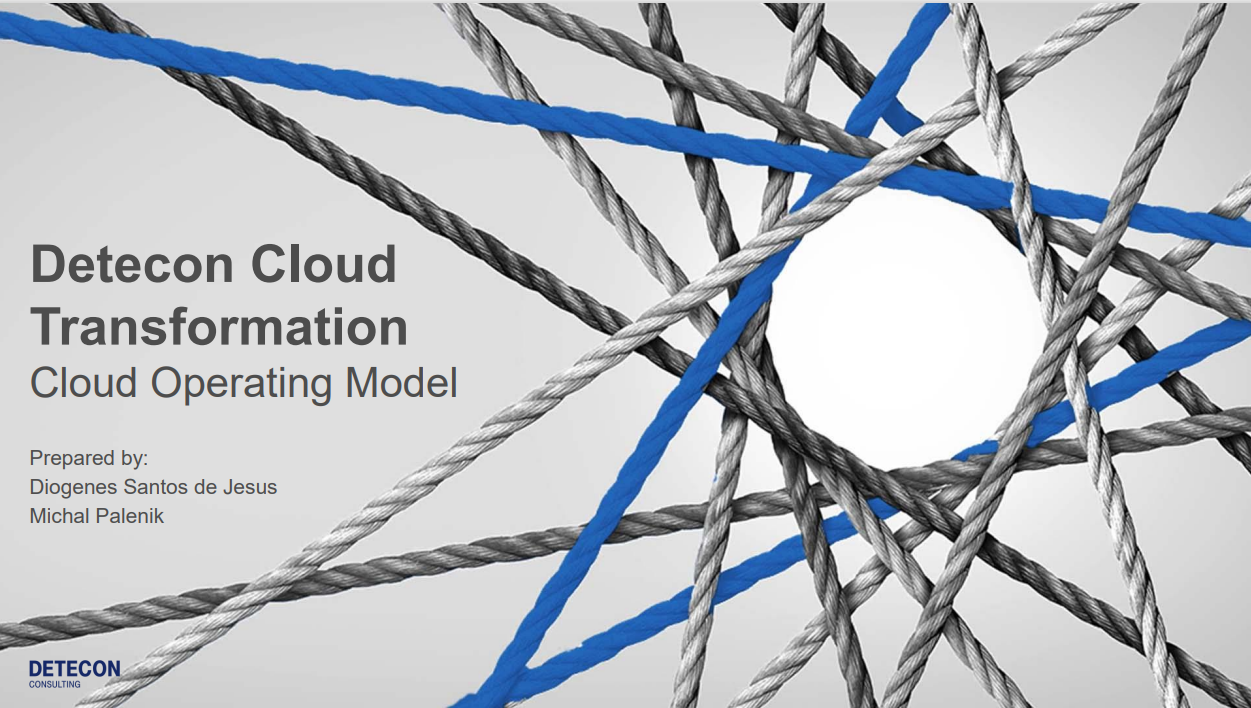- Home
- Consulting
- Consulting Areas
- Technology
- Cloud Transformation
Cloud Transformation
Smartly and Efficiently Design the Path to the Cloud
Cloud computing has been with companies in all industries for some time, but the dynamic development of public cloud platforms is opening up more and more new opportunities to improve products, produce more agilely and elastically, or save costs. Cloud is now a driver of business transformation and a core element of any shift to digital products and production models. In this context, the transformation driven by cloud goes far beyond a change in technology: It also particularly affects a company's organization and processes, product and software development, and strategies for cyber security or data protection.
Not all industries are equally advanced on their way to the cloud, and there are very different challenges: For example, special regulations in the banking sector or performance requirements at telecommunications companies. But it is precisely now that it is important to remove suspected or actual obstacles and exploit the full potential of the "cloud" principle. The higher innovation rate, the availability of AI/ML services or the possibility to test prototypes worldwide within minutes are a strong competitive advantage.
Our Services
We accompany our customers holistically on their way to the cloud - from technology and operating models to organization and processes. Together we work out the answer to the question "Why?" - because this is the only way to achieve a sustainable cloud transformation. Based on our detailed understanding of technology, we identify the individual advantages for our customers in a practical manner. Be it in the area of modernizing applications or infrastructure, improving elasticity or innovation. We are independent, but at the same time well networked with all major cloud players.
Cloud Transformation Strategies
The journey for an enterprise to adopt cloud is transformative in many dimensions and cannot be seen as a technology strategy only. There are many drivers to start a cloud transformation (needs of applications and developers, cost savings, infrastructure lifecycle, DevOps introduction, etc.) but often the purpose is not clearly described and agreed upon with all relevant stakeholders. Cloud journeys without aligned purposes and lift-and-shift, KPI driven migrations lead to frustration and lost modernization opportunities.
How do we approach it?
- We support a phased approach from discovery, strategy development to transformation.
- We provide independent cloud consultancy to setup the right ecosystem of hyperscalers, cloud ISVs, managed services providers and system integrators based on the clients needs.
- We bring in a multi-disciplinary team to treat strategy, technology, operating model and costs.
- We cluster and prioritize modernization opportunities (lifecycle opportunities, business process optimizations, automation and architecture) and develop a cloud transformation roadmap.
- We analyze as-is IT processes and cloud capabilities to develop a best-fit operating model.
Cloud Architecture
Choosing the right architecture is crucial for the success of every cloud transformation – to deliver the needs of workloads and development teams at the right cost levels. Cloud is very much a technology driven topic and product portfolios of public cloud suppliers are complex and change daily. There is a multitude of options to modernize and transform existing architecture while moving to the cloud, from geography via the extended use of platform services up to rethinking security. Many performance and resiliency challenges need to solved and the integration of on-prem infrastructure and network integration is complex.
How do we approach it?
- We map the application and geography needs to public cloud capabilities.
- We evaluate hybrid cloud and on-prem infrastructure needs, evaluate on-prem offerings from Hyperscalers as well as traditional private cloud solutions.
- We develop cloud security concepts, CI/CD architectures and resiliency concepts.
- We detail the consolidation potential and prioritization of introduction, modernization as well as the consolidation sequences.
Cloud Operation Model
Many cloud transformations fail because too little thought is spent on operating models. What are the drivers for a successful Cloud Operating Model? A Cloud Operating Model (COM) defines how the organization interacts within (people, processes, technology) in the unique cloud ecosystem and around (partners) to deliver a value to its customers. When thinking about a Cloud Operating Model (COM), not only technology plays a major role – a comprehensive COM should consider different dimensions of an organization in order to effectively address hurdles, roadblocks and ultimately improve the way business is performed daily.
Therefore a Cloud Operating Model consists of four main pillars:
- Governance: The Cloud Governance Model provides a framework and principles for cloud deployment and operations, security and cost management as well as for management of the ecosystem incl. partnering.
- Organization & Culture: It defines how the organization should look like (organizational design) and interact in and out effectively and efficiently. Culture within the organization is the core element of each COM.
- Processes: Process architecture, based on successful agility principles together with agile process definition are key elements and provide baseline for creating process monitoring and quality steering mechanisms.
- Roles, Skills & Tools: Regardless of product owner, TechLead, DevOps, etc., clearly defined and communicated roles with extensive learning and training opportunities creates a baseline for high-performance and satisfied teams.
Compliance and the Sovereign Cloud
In many industries public cloud is still not considered an option for compliance and data sovereignty reasons – e.g., public, health, financial services but also telco verticals. Without a thorough understanding of both industry data regulations and security principles (e.g. encryption and IAM) a significant potential of the cloud will be missed in those industries. Hyperscaler have identified those “white spots” and are embracing those sectors differently: explaining how GDPR compliance and sovereignty can be achieved with existing products (AWS) or do partnership deals with local players to increase trust (e.g. Google/T-Systems in Germany or Microsoft in France).
How do we approach it?
- Analysis and evaluation of the prioritized applications in light of specific security requirements as well as defined standards of CSA-CCM, BSI, ENISA, Bitkom, …
- Develop the cloud sovereignty strategy: make use of available public cloud features (e.g. external key management), use dedicated sovereign clouds and/or include fully disconnected private cloud options.
- Utilize data sovereignty specific standards like Gaia-X or industry specific data blueprints.
Cloud go to Market
Becoming a cloud services provider (CSP) is still an attractive B2B proposition in different setups despite the growing footprint of Hyperscaler offerings. There are regions where public cloud is not available and there are specific cloud use cases – in particular edge cloud – where infrastructure players see the opportunity to become CSP. There are specific cloud market segments – e.g., driven by privacy or costs – that may allow for viable business models as CSP in competition or in partnership with hyperscalers. In cooperation with hyperscalers there is a large market for managed cloud services providers.
How do we approach it?
- We utilize Detecon’s go-to-market consulting model integrated with our cloud expertise.
- Develop a competitive product portfolio, business plan, technology setup and operating model.
- We describe and evaluate strategic CSP options: a fully independent (e.g., opensource based) approach, Hyperscaler partnering (e.g., using on-prem offerings of Hyperscalers) or multi-cloud partnering (e.g., MobiledgeX).

What are the drivers for a successful Cloud Operating Model?
A well-defined Cloud Operating Model is a key success factor for the organization’s effectiveness as well as providing added-value to its customers.
Read here about our consulting approach
External editorial content
Get in touch with us





